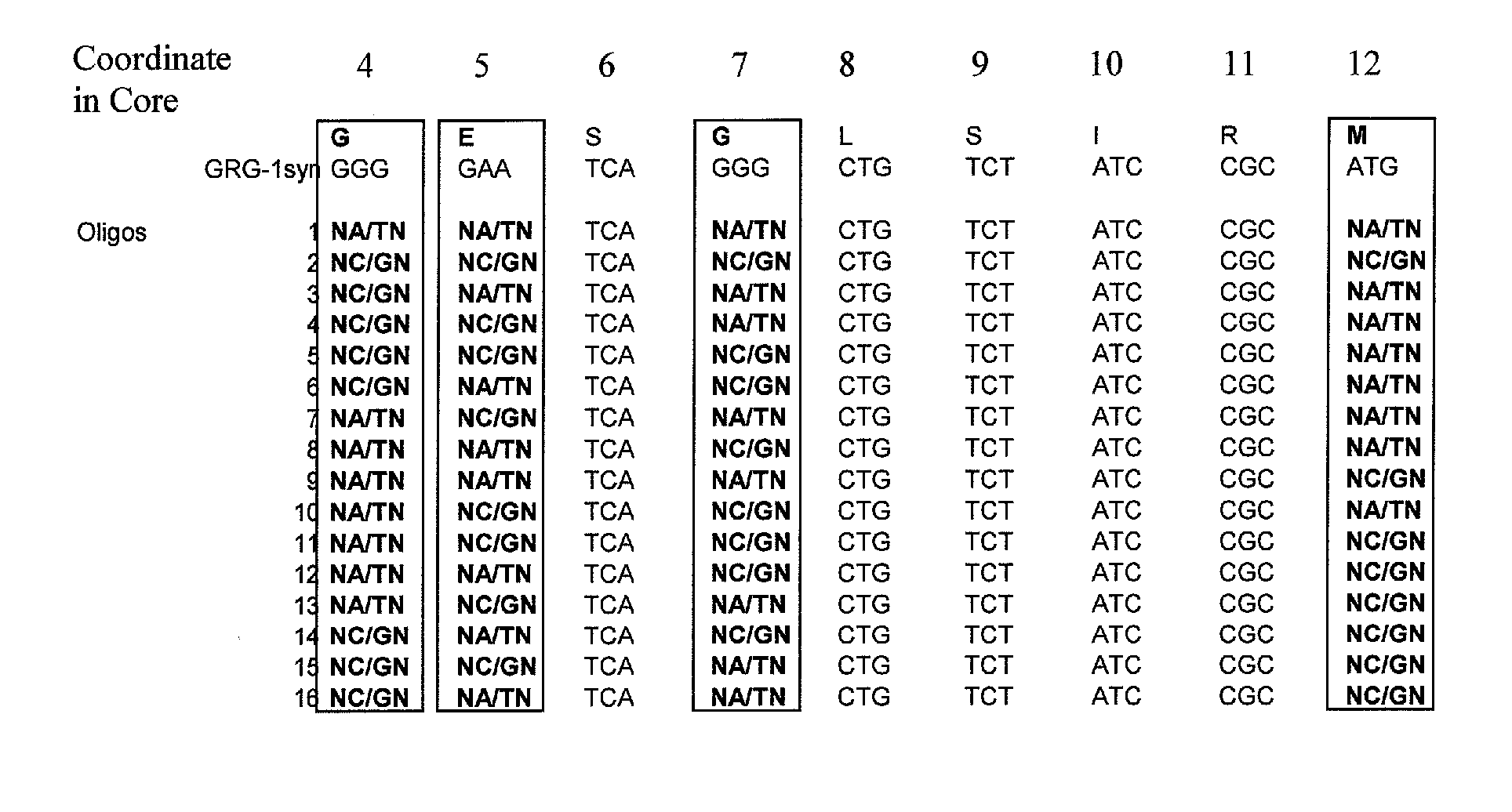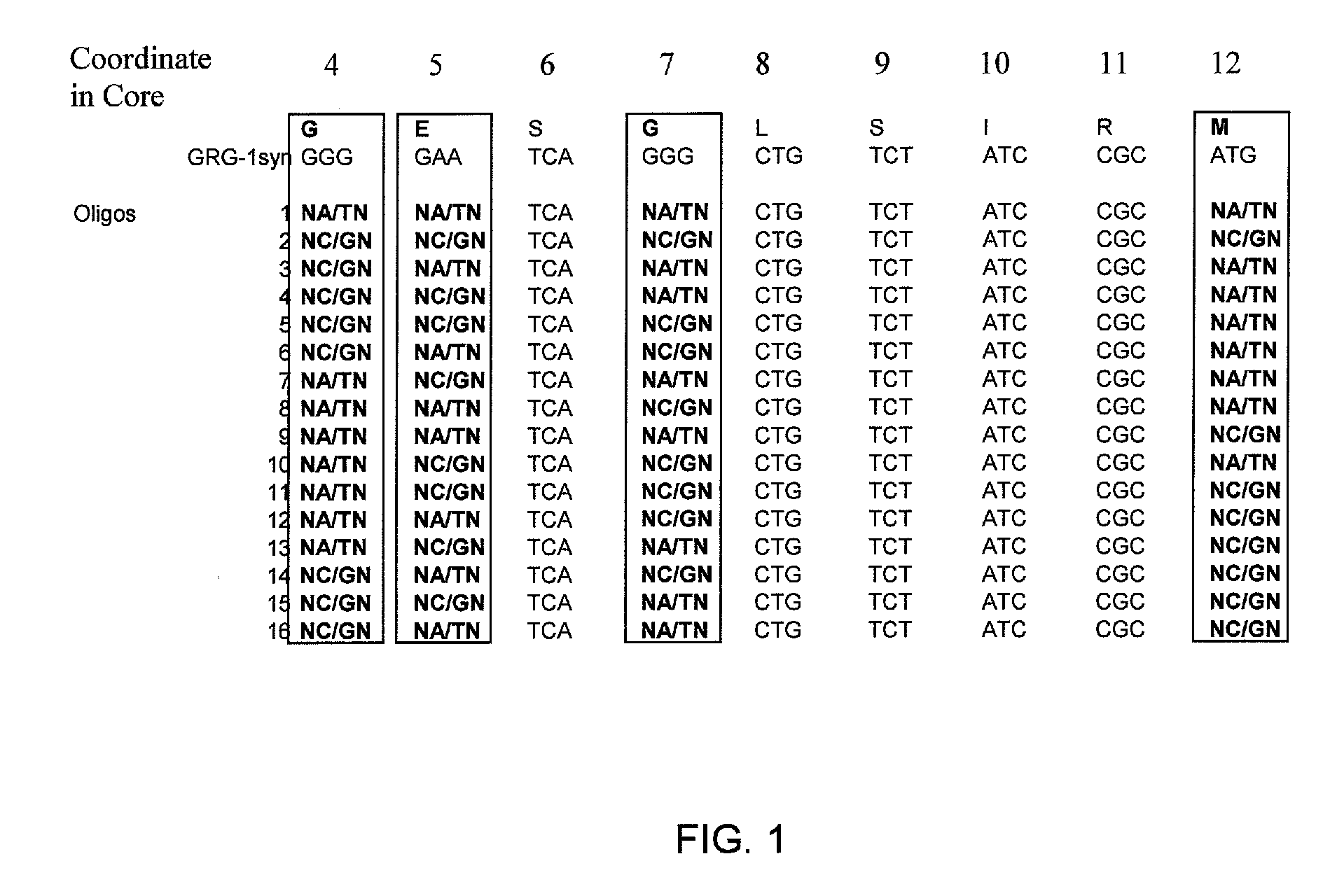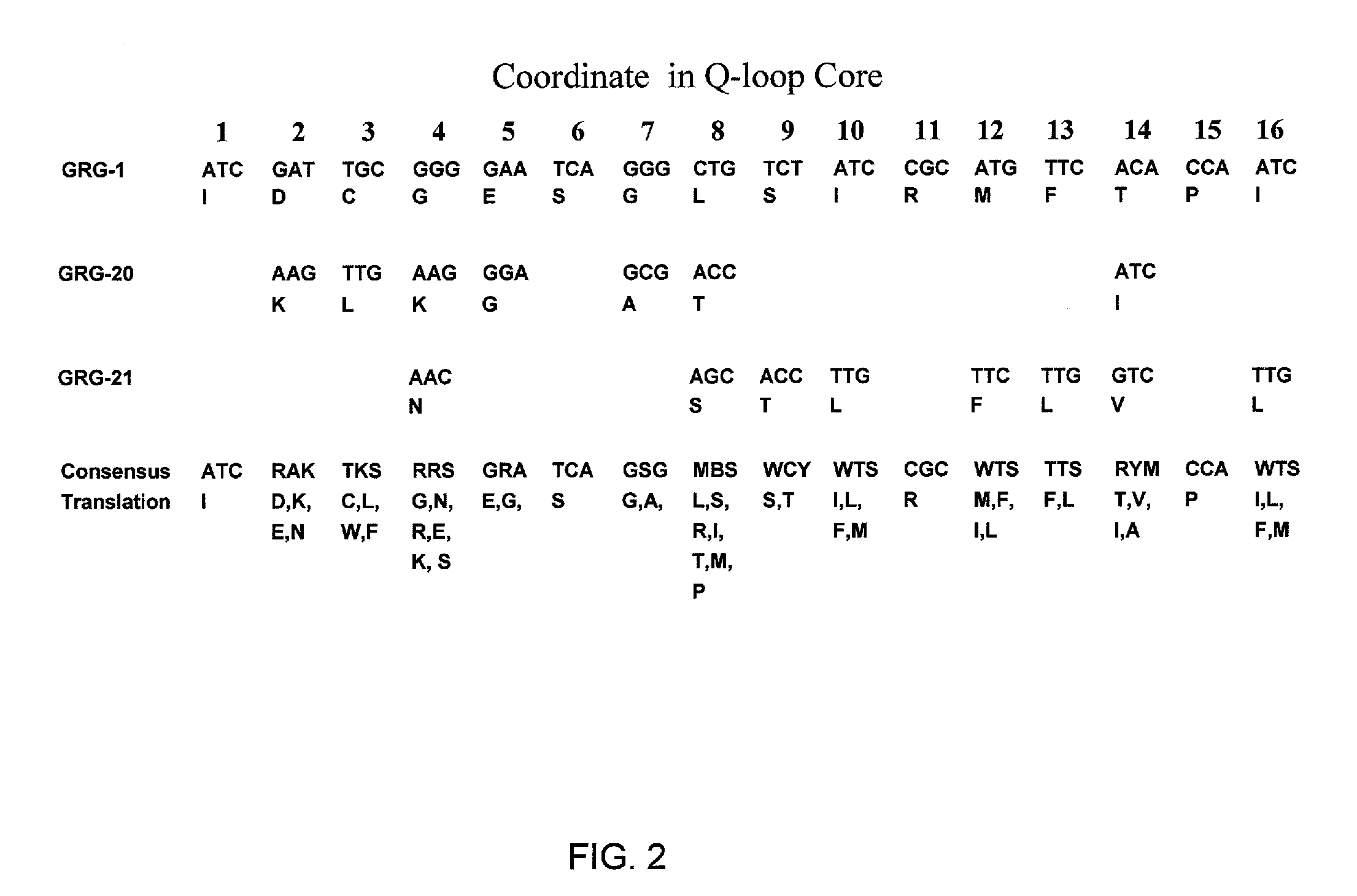EPSP synthases: compositions and methods of use
a technology of epsp synthase and composition, applied in the field of plant molecular biology, can solve the problems of toxic to bacterial cells, not only killing plant cells, but also toxic to these bacteria
- Summary
- Abstract
- Description
- Claims
- Application Information
AI Technical Summary
Benefits of technology
Problems solved by technology
Method used
Image
Examples
example 1
syngrg1 Design and Expression
[0091] A novel gene sequence encoding the GRG1 protein (SEQ ID NO:2; U.S. patent application Ser. No. 10 / 739,610) was designed and synthesized. This sequence is provided as SEQ ID NO:3. This open reading frame, designated “syngrg1” herein, was cloned into the expression vector pRSF1b (Invitrogen), by methods known in the art.
example 2
Site Directed Mutagenesis of GRG1
[0092] U.S. patent application Ser. No. 11 / 651,752 filed Jan. 12, 2006 (herein incorporated by reference) discloses the Q-loop as an important region in conferring glyphosate resistance to EPSP synthases. The Q-loop is defined as the region from the valine corresponding to amino acid position 80 of SEQ ID NO:2 (GRG1) to the glutamine corresponding to amino acid position 105 of SEQ ID NO:2. For the purposes of the present invention, discussion of the Q-loop will be further restricted to a region comprising the “core” region of the Q-loop spanning from the isoleucine corresponding to amino acid position 84 of SEQ ID NO:2 to the isoleucine corresponding to amino acid position 99 of SEQ ID NO:2.
[0093] Herein a position number is assigned to the amino acids in this core region to simplify referral to each amino acid residue in this region. Thus, the positions of the Q-loop core correspond to amino acids 84 through 99 of SEQ ID NO:2 (I-D-C-G-E-S-G-L-S-I-...
example 3
Combinatorial Mutagenesis of syngrg1-SB
[0095] A library of mutant clones (Library1) was developed by combinatorial mutagenesis within the Q-loop core region of GRG1 with a set of 32 oligonucleotides. These oligonucleotides were designed to introduce mutations in four of the Q-loop residues, at positions 4, 5, 7, and 12 of the Q-loop Core (Table 1 and FIG. 1). Oligonucleotides were resuspended in 10 mM Tris-HCl pH 8.5 at a concentration of 10 μM. To form double-stranded DNA molecules, complementary oligonucleotides were mixed and incubated as follows: 95° C. for 1 minute; 80° C. for 1 minute; 70° C. for 1 minute; 60° C. for 1 minute; and 50° C. for 1 minute.
[0096] The double-stranded DNA molecules containing degenerate codons were digested with Spe I and BstB I restriction enzymes as specified by the manufacturer. After the restriction digest, the DNA was loaded onto a 4% agarose gel and subjected to electrophoresis. The DNA was excised from the gel and eluted using a QIAQUICK® gel...
PUM
| Property | Measurement | Unit |
|---|---|---|
| temperature | aaaaa | aaaaa |
| temperature | aaaaa | aaaaa |
| pH | aaaaa | aaaaa |
Abstract
Description
Claims
Application Information
 Login to View More
Login to View More - R&D
- Intellectual Property
- Life Sciences
- Materials
- Tech Scout
- Unparalleled Data Quality
- Higher Quality Content
- 60% Fewer Hallucinations
Browse by: Latest US Patents, China's latest patents, Technical Efficacy Thesaurus, Application Domain, Technology Topic, Popular Technical Reports.
© 2025 PatSnap. All rights reserved.Legal|Privacy policy|Modern Slavery Act Transparency Statement|Sitemap|About US| Contact US: help@patsnap.com



